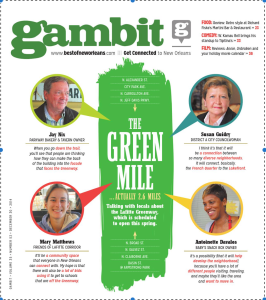Who pays for the roads, anyway?
A friend asked a question on facebook yesterday. She wanted an objective, fact-based response to the argument some people start about bicycle riders: “Bicyclists don’t pay for roads so they shouldn’t use them.” This argument seems logical to many, but in fact, is completely off-base.
First, there is no such thing as a road tax. All of us pay taxes to support the functions of government. One of those is creation and maintenance of a transportation system. I hear you saying, “But gas taxes pay for roads.” Yes, gas taxes do contribute to infrastructure development and maintenance. But in many places (notably here in New Jersey) the gas tax got rolled into the general fund. And the general fund is used to pay for anything for which the government chooses to use it. It is NOT dedicated to infrastructure construction and maintenance. Also, gas taxes, even if they were dedicated to road costs, would not cover the cost of construction and maintenance. So a significant portion of the funds would still have to come from the general fund.
In almost all places where bicycle riders are on the road, the local government handles road construction, or at least maintenance. Funds for the local government come mainly from…property and/or sales taxes. So anyone who owns property or buys anything is actually paying for the road.
And county and state roads are mostly funded by…income or sales taxes. So anyone who works or buys anything pays for the roads.
And Federal highways are funded by the US government. And the Federal government is funded by…income tax.
So anyone who works, or owns property, or buys anything pays for the roads. Wow, that changes perspective, doesn’t it?
Now back to the original proposition (that bicycle riders don’t pay for roads). Quiz: do bicycle riders own cars? Almost all do. So they do pay gas tax, like everyone else who drives a motor vehicle. They bought those cars, and groceries, and clothes, so they also paid sales tax, too. They probably work somewhere to get the income to buy all these things, so they pay income tax, too.
Oh…sounds like that argument just doesn’t hold up, doesn’t it?


 The city’s latest project is the “Lafitte Greenway.” Work finishes up this spring on repurposing an old railway bed that runs for 2.6 miles from the edge of the French Quarter out to the Lakefront, pretty much bisecting the city. It will connect many diverse neighborhoods with a multi-use park, with sports facilities, paths, bike lanes, and businesses all along the perimeter. An ambitious, and inspiring, project. The Dec. 30 issue of “
The city’s latest project is the “Lafitte Greenway.” Work finishes up this spring on repurposing an old railway bed that runs for 2.6 miles from the edge of the French Quarter out to the Lakefront, pretty much bisecting the city. It will connect many diverse neighborhoods with a multi-use park, with sports facilities, paths, bike lanes, and businesses all along the perimeter. An ambitious, and inspiring, project. The Dec. 30 issue of “